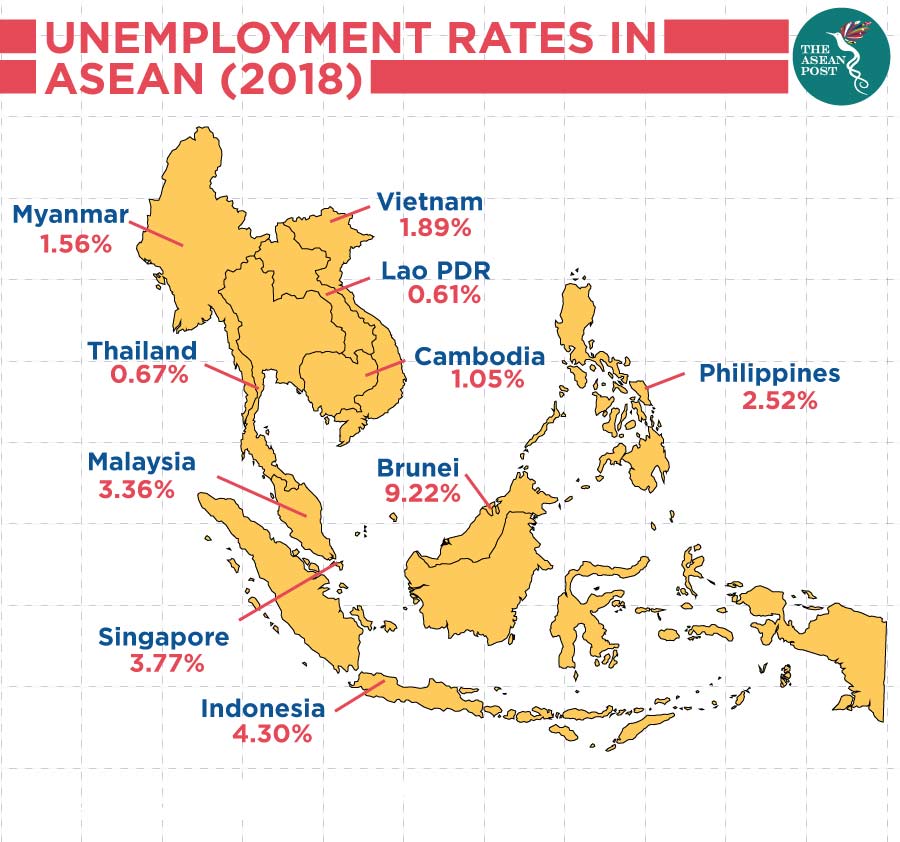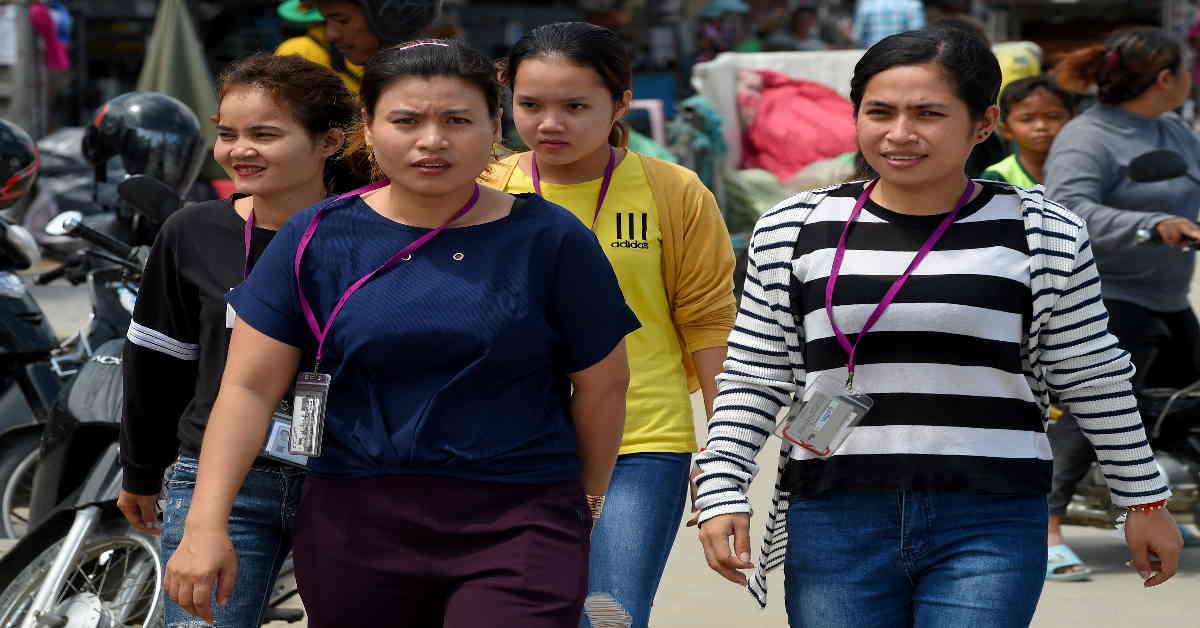Cambodia boasts one of the lowest unemployment rates in Southeast Asia. According to research platform for investors, Macrotrends, this number stood at 1.05 percent in 2018, putting its unemployment rate only higher than Thailand’s (0.67 percent) and Lao PDR’s (0.61 percent) when compared to other ASEAN countries.
The idea that Cambodia has such a low unemployment rate may seem like good news for Cambodians at first glance. However, some experts say the low unemployment rate in Cambodia fails to reflect the real situation on the ground.
In January last year, the International Labour Organization (ILO) released a report in which it noted that while Southeast Asian countries are continuing to create jobs, they often remain of poor quality. Sara Elder, head economist at the ILO’s Asia and Pacific office, explained that what this means is that in Cambodia and other countries, while the citizens there are technically employed, they are still struggling to make ends meet.
“A lot of people in Cambodia are doing a few hours of work during the week, such as selling something on the street, but in the meantime, they’re looking for another job, another source of income. So, in a sense, they’re employed and unemployed at the same time,” Elder explained.
According to the ILO report, Cambodia’s unemployment rate is below the 3.4 percent for Southeast Asia as a whole. However, 51 percent of jobs in Cambodia are “vulnerable” jobs, which is slightly higher than the Southeast Asian average of 46 percent.
People working in these “vulnerable” jobs are not salaried. Instead, they may be working either as farmers or for their families. Many are what economists today may refer to as “underemployed”.
According to Investopedia, underemployment is a measure of employment and labour utilisation in the economy that looks at how well the labour force is being utilised in terms of skills, experience and availability to work. Labour that falls under the underemployment classification includes those workers who are highly skilled but working in low paying or low skill jobs, and part-time workers who would prefer to be full-time. This is different from unemployment in that the individual is working but is not working at his/her full capability.

According to the International Trade Administration (ITA) of the United States’ (US) Chamber of Commerce, 80 percent of Cambodia’s population resides in rural areas, and around 37 percent of the total workforce was directly engaged in the agriculture sector in 2017. It also noted that the sector accounted for approximately 23.5 percent of gross domestic product (GDP) in 2018.
Skills versus jobs
The idea of underemployment is that people work in jobs unworthy of their skills. If this is the case in Cambodia, then it is noteworthy.
The ASEAN Post recently published an article which stated that leading institutions in Singapore will be helping Cambodia to get itself ready to fully embrace the Fourth Industrial Revolution.
The article noted that Singapore’s leading institutes are collaborating with the Cambodian government on a three-year programme that is expected to equip local students with the knowledge and skills required to tackle the challenges of the 21st century.
Singapore’s Ambassador to Cambodia, Michael Tan was quoted as saying that the programme would involve his country’s Ministry of Education, Youth and Sport, as well as Temasek Foundation International (TFI), and Singapore’s National Institute of Education International (NIE International).
The programme comprises of six components and it will see a series of training workshops and conferences covering various topics, including School Leadership and Educational Management in the 21st Century, Approaches on Leading and Managing the 21st Century Schools and Effective Cascading through Facilitation and Coaching Skills.
There is little doubt that Cambodia will have a lot to learn from Singapore in terms of skills; and upgrading skills continues to be something Cambodia needs to work on. Nevertheless, the question that remains unanswered is this: what then happens to these high-skilled Cambodians? If underemployment is a problem that Cambodia is facing, then upgrading skills does not solve this problem. Instead, Cambodia must focus on creating job opportunities that will allow these future high-skilled workers to work within their borders.
Related articles:
